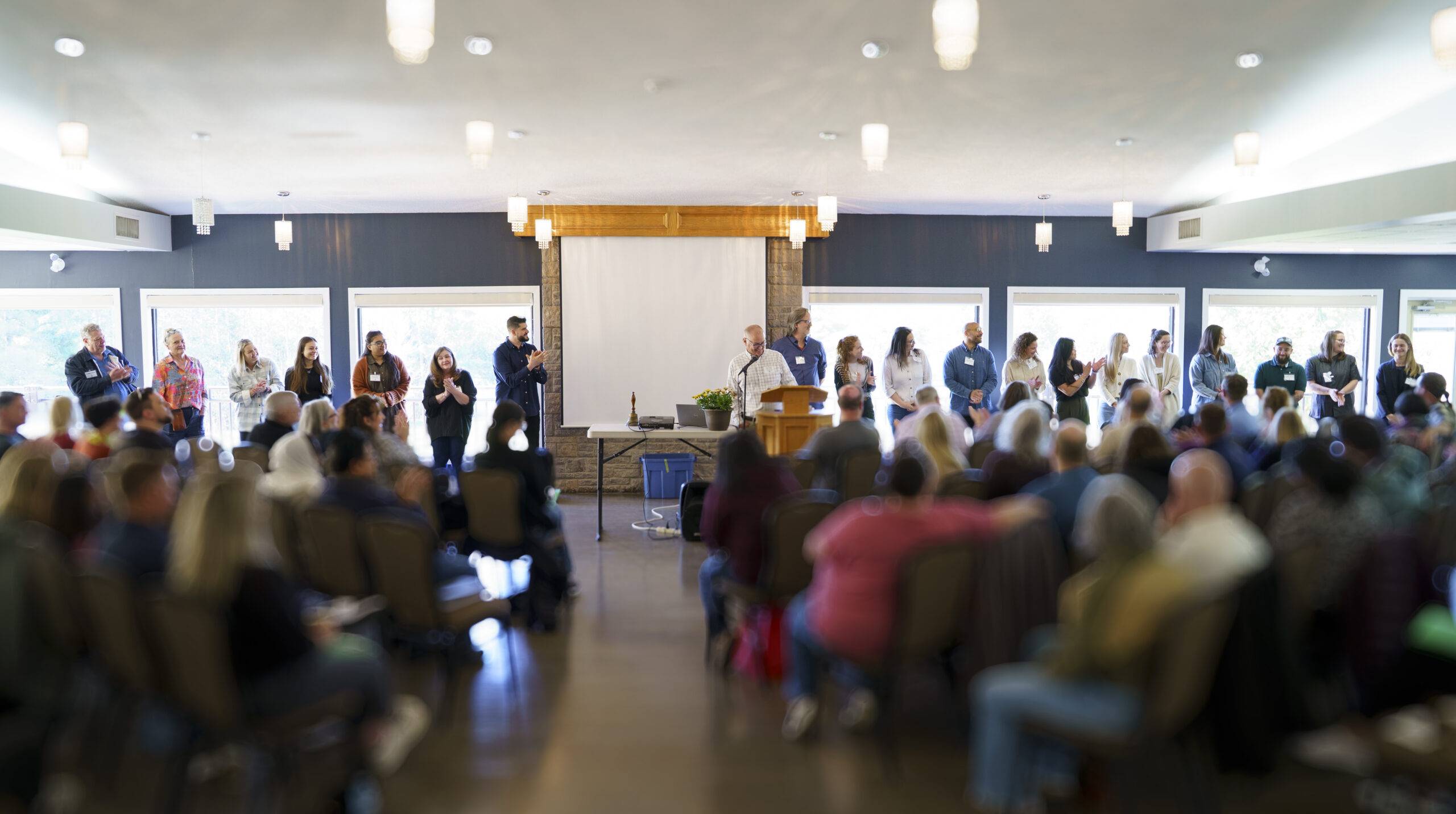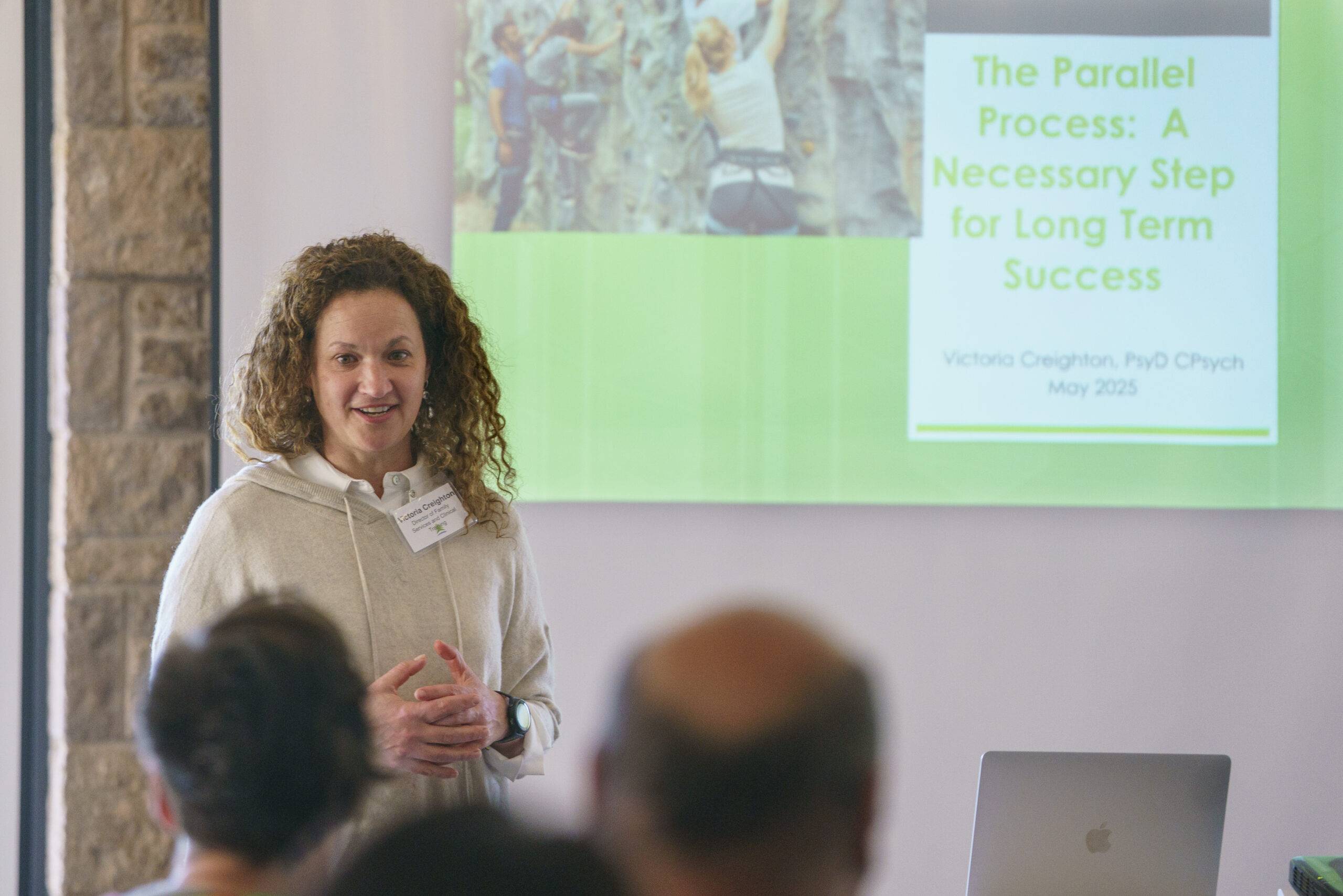
A Developmental Model That Meets Youth Where They Are
At Pine River Institute, we’ve spent nearly two decades supporting youth who struggle with addictive behaviours and other mental health challenges, and their families. From the start, we’ve understood that many of the struggles youth face are part of a larger developmental story—and that real support means helping them grow through it.
Our approach is grounded in a developmental model of maturity. That means we see emotional and psychological growth as something that unfolds over time—not something that magically happens at 18. It also means we meet young people and families where they are, and support them in the real, often messy, process of growing up.
Guided by Experience: Dr. Victoria Creighton and the Maturity Model
This model and approach were brought to Pine River and shaped into what they are today by our director of clinical training and family services, Dr. Victoria Creighton. After being mentored by Dr. John McKinnon, a psychiatrist who developed the “Maturity Model,” Victoria refined and adapted the framework to meet the needs of the youth and families we serve.

Her leadership has grounded our team in a shared, developmental lens—and in the belief that real maturity is something that can be nurtured and supported.
Families Grow Too: The Parallel Process
All of the parents and caregivers of youth in our program participate in what we call the Parallel Process: they do their own work, alongside their child, in parent workshops with our clinical team.
Listen: Dr. Victoria Creighton on the Maturity Model and Parallel Process
From Medical Diagnosis to Developmental Understanding
As Victoria often explains:
“The primary thing that’s different from other models is that we’re looking at adolescent and young adult growth through a developmental lens. It’s a step away from the medical model. It recognizes that maturity is a developmental achievement—not something that just happens when you hit 18.”
Instead of asking What’s wrong with this young person?, we ask:
- What emotional skills are still growing?
- What developmental needs are showing up here?
- How can we support the whole family to grow together?
This approach informs parents and caregivers, strengthens families, and helps create lasting change.
“With the developmental model, it empowers families. It empowers parents to actually recognize that they need to parent, and we support them in doing that,” Victoria says.
Supporting Maturity in Real Life: What We Look For
It also acknowledges something fundamental: not all young people have had the same chance to grow up smoothly.
“Oftentimes the students that we see, there’s a delay in their maturity,” Victoria explains. “And it’s not due to any fault of their own—there may have been obstacles placed in their path. Those obstacles could be internal or external.”
That understanding is central to our work. Instead of seeing struggles as signs of failure, we see them as signs of what’s still developing—and where support is needed most.
The maturity model we use, developed by Dr. John McKinnon and refined in our work, gives us a shared language to describe what emotional growth really looks like. As Dr. Creighton explains, these are the kinds of things we look for in young people as they develop:
- The ability to feel empathy, especially for people who are different from themselves
- A future orientation that’s realistic and grounded in their actual life
- The ability to regulate strong emotions rather than being overwhelmed by them
- A developing social ethic—understanding that their behaviour impacts others
- The capacity for abstract thought, including reflecting on their behaviour in the context of relationships
These markers of growth help guide our work with young people and families—not as rigid expectations, but as signs of what’s possible when the right support is in place.
The Impact We See—and Share
We’ve seen the results—and we’ve tracked them. Over nearly twenty years, our internal research and evaluation show that the gains young people and families make through this model are not just meaningful in the moment—they last. Youth leave with stronger emotional regulation, more resilience, and better relationships. Families feel more connected, hopeful, and equipped for what comes next.
Spreading the Model: Training and Collaboration
And we don’t keep this model to ourselves.
We train other clinicians and professionals in our approach so they can bring this perspective into their own work with youth and families.
“By helping therapists or other clinicians understand this model, we’re giving them tools, a new language, and a real purpose: how do we empower this family to heal and grow, versus fix the kid?” says Victoria.
We also share our outcome data and research because we believe in the broader impact this model can have—across systems, communities, and lives.
A Shared Goal: Reclaiming Lives and Futures
It’s one more way we’re working toward a bigger goal: to help youth who are struggling with addictive behaviours and other mental health challenges to reclaim their lives, their families, and their futures.
